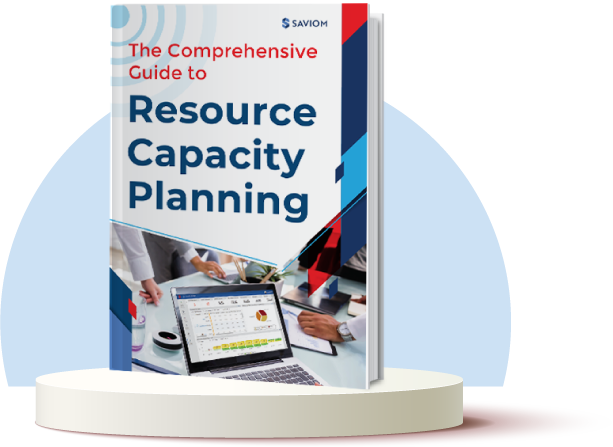The advent of collaborative technologies has made it easy to connect and communicate with individuals worldwide, and project management is no exception in this journey. Whether working for an international client or with an overseas partner division or department, global project delivery has gained significant momentum and is here to stay.
However, managing these projects is not an easy feat. It has several challenges such as time zone differences, language barriers, work-style issues, etc.
Amongst the numerous bottlenecks of global projects, the resource-centric obstacles are the most critical ones that can completely derail your project.
Therefore, to navigate new opportunities and deliver their projects successfully, a project manager should be adept at identifying and managing these challenges.
This blog highlights the nuances of global project delivery and gives a comprehensive view of the resource-centric challenges and ways to mitigate them.
But first, let’s understand what constitutes a global project:
What are global projects?
Global projects are the ones that utilize resources, teams, or groups that are based across multiple geographical boundaries. For instance, let’s consider that a firm is located in the U.S and hires resources from numerous countries such as India, Canada, etc., to work on a software development project. Since the project team comprises resources distributed across various geographies, it can be classified as a global project.
One must be wondering that if the same work can be carried out from where the company is situated, then why are they staffing the projects from across multiple regions?
One of the significant reasons is the cost factor. Hiring resources from Tier-2 and Tier-3 nations reduces project resource costs, thus yielding a better profit margin. Other factors include round-the-clock resource availability, access to the best talent, etc.
Now that the basics are clear, let’s understand the various global project models.
Read More: 4 steps to perfect your Project Pipeline Management strategy
Different global project models
The choice of the delivery model can significantly impact the overall project’s performance. Therefore, companies should select a model solely based on the project requirements.
Here is a rundown of four different global project models. Let’s have a look at them:
Onshore/Onsite delivery model:
In this model, both the organization handling the project and the resources utilized will be from the exact location. For instance, if the project is executed from Germany, the resources will be asked to travel to the onsite location even if they are recruited from various geographies.
The advantage of the onshore project model is that businesses can work with native teams with no language and time-zone barriers. At the same time, the project will be executed with the direct supervision of the client and the stake holders. However, the cost is a considerable disadvantage because companies often cover stay and other overheads for resources.
Offshore/Offsite delivery model:
Here, the organization will be handling the project from one location, and the project team will be working from another region, preferably a low-cost area. For instance, if the project is headed in the U.S and the resources are operating from India, Africa, etc. The most significant advantage is the reasonable expense. But, it comes with challenges of socio-linguistic and time differences.
Some amount of travel is still required by the key resources during the project initiation or implementation phase. However, that cost will be negligible compared to hiring local resources at an onsite location.
Nearshore delivery model:
In this model, the organization will be located in one location, and the project team will be operating from a different country but within the same continent. For example, if the resources are working from Mexico and the project is happening in Canada. Nearshore outsourcing saves money over onshore outsourcing and has the added benefit of more regular site visits than offshore outsourcing.
Hybrid/Dual delivery model:
This model is a combination of the previous three models. Organizations may use this model depending on the requirements of the project. For instance, if the project is headed in the U.S, managers can hire a team from India, Mexico, and Austin, which means some resources will be offshore, nearshore, or onshore. This makes it a very flexible and ideal model with all the advantages of a global cost structure.
Like other projects, global projects require a large number of resources. And in most cases, managers find it difficult to manage them. The following section will explain the most significant resource-centric challenges that global project managers may face and how they can tackle them.
Resource-centric challenges in global project delivery
Here are the resource-centric challenges in global projects and related solutions.
Absence of centralized visibility of global resources
Since managers recruit talent from multiple locations, they may not have all resource-related information on a single platform, creating silos. As a result, they will not get updates about resources profiles, skills, experience, availability, etc., eventually causing discrepancies, incompetent allocation, over/underutilization, etc.
So, what is the solution for this?
Solution: The solution is to implement a resource management tool that provides 360-degree visibility of all the resources. It will help managers identify, allocate, and utilize cost-effective global resources from low-cost locations. This will reduce project resource costs while ensuring competent allocation.
Improper scheduling due to time zone differences
Time zone difference is a significant challenge for global project managers. For instance, if the project is taking place in the USA and the team is operating from India, there will be a time zone difference of approximately 10 hours. However, due to a lack of a real-time view of resource schedules and availability, managers book them without considering the time difference.
If the expectation for Indian resources to work continuously in the USA time zone, it will cause burnout, leading to attrition and creating an unstable workforce. Instead, only some key personnel can be asked in a different time zone on a rotational basis and share information with the remaining team.
Solution: To avoid this challenge, managers should deploy a multidimensional resource scheduler that provides a single version of truth by consolidating every resource data on a consolidated platform. It provides them with visibility into all the present and future resource schedules, availability, and time zones. Also, it captures the data on public holidays in different regions, thus, enabling the managers to schedule resources as per their time zones.
Read More: How to Perfect Resource Scheduling Techniques within Project Planning?
Inability to track real-time utilization of global resources
Keeping track of productivity is incumbent to ensure timely project delivery. However, tracking the real-time utilization of resources working on global projects can be a significant challenge. The reasons can be due to resources working on concurrent tasks, lack of real-time updates, inadequate communication, etc. When managers cannot track resource utilization, it may lead to over/underutilization, billable loss, burnouts, etc.
How can we eliminate these repercussions?
Solution: You can overcome this challenge with the help of a resource management tool. The tool offers real-time insights into utilization metrics. Moreover, it can also provide you with data regarding future resource allocations, which allows you to implement corrective measures ahead of time. For example, you can proactively mobilize resources from non-billable to billable and strategic work before it starts affecting your bottom line. Moreover, with forecast vs. Actual utilization reports, managers can understand if the project is going as per the initial plan and course-correct if it veers off.
Read More: What is Resource Utilization? A Complete Guide to Improve Business Efficiency
Mismatched skill sets as per global project requirements
Global projects demand specific skillsets and high-quality standards to meet the deliverables. However, even if you hire a similar skilled resource from a low-cost location, they may not be compatible for the project, leading to mismatched skill set, compromised quality, etc. At that moment, you may have to resort to hiring new resources, which will lead to budget overruns.
So how do you combat these issues?
Solution: The best way to tackle this challenge is to be proactive and forecast the future resource requirements in advance. Understanding the client’s expectations at the pipeline stage and seeing if the required skills, competencies, or certifications are universal or country-specific. Then, to avoid wrongful hiring, managers can use resource capacity planning solutions to identify skill shortages and implement training and upskilling of resources across the different locations to meet the criteria.
Read More: Importance of skill development in making your workforce future-ready
Compliance and country-specific legal issues
Every country has certain specific rules. And as the global project manager, since you’ll be using resources from various countries, you will have to abide by their compliance laws and employee-centric rules. For instance, in some countries employees work for 4 days a week. So, if you utilize any resource from one such country, you will have to schedule them accordingly. Otherwise, it may cause legal issues, and employees may even file lawsuits against your organization.
Do you have some possible solutions?
Solution: A simple solution to this issue is that you should do proper research on all the country-specific laws and rules. Moreover, you may even document them for future reference. Hence, you can stick to these laws and utilize resources from any location without any legal hindrance. Furthermore, some tools also log this data for you, so you can look out and implement one in your firm.
Conclusion
Resource-centric challenges may plague global projects if not appropriately handled. As a result, the project manager should be proactive and have great leadership and people skills to manage global resources. The afore-mentioned solutions paired with a robust resource management tool will surely help you mitigate the most common challenges and ensure successful global project delivery.
Are you using an enterprise resource management tool?
The Glossary:
Read More: Glossary of Resource Workforce Planning, Scheduling and Management
The Saviom Solution:
SAVIOM is the market leader in offering the most powerful and configurable solutions for managing enterprise resources efficiently and effectively. Having more than 20 years of experience, this Australian-based MNC has a global presence in over 50 countries. It is also popular with more than 100 customers and helps them achieve their business goals. SAVIOM also has products for project portfolio management, professional service automation, and workforce planning software which can be easily customized as per business requirements.










